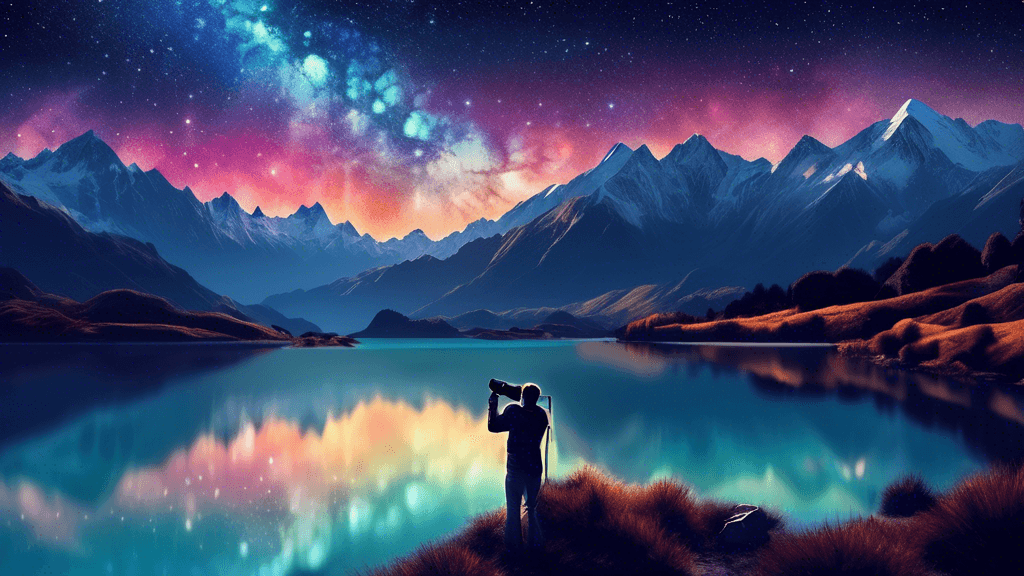
Capturing the Cosmos: Celestial Photography in New Zealand’s Stunning Landscapes
Share
Unveiling the Beauty of the Night Sky
For enthusiasts of both photography and the celestial wonders, New Zealand offers a spectacular canvas. But what is it about New Zealand's landscapes that make them a haven for astrophotographers? And how can beginners get started in this mesmerizing hobby?
The Allure of New Zealand’s Skies
New Zealand's geographical location and minimal light pollution create optimal conditions for observing and capturing the night sky. From the sprawling, stark vistas of the Mackenzie Basin to the rugged coastlines of the North Island, the country boasts some of the most photogenic and dark-sky friendly sites in the world.
Key Reasons for New Zealand's Celestial Fame:
- Dark Sky Sanctuaries: Areas like the Aoraki Mackenzie, which is a Gold Level Dark Sky Reserve, offer skies so clear that the Milky Way seems almost tangible.
- Geographical Diversity: Whether it’s the southern auroras in the Otago Peninsula or the star trails over the Tongariro National Park, the variety in landscapes serves as both foreground interest and a complement to the celestial features.
- Stable Weather Conditions: Particularly on the South Island, the stable weather patterns result in less cloud cover and more nights ideal for sky-watching.
Dr. John Hearnshaw, a professor of astronomy, notes, New Zealand's skies are a treasure. Here, one can not only observe the vastness of our own galaxy but also easily see neighboring galaxies, star clusters, and nebulae with standard photographic equipment.
Getting Started with Celestial Photography
Embarking on the journey of celestial photography can be as daunting as it is exciting. However, understanding the basics and being equipped with the right gear can pave the way for a truly enriching experience.
Essential Equipment:
- A Durable Tripod: Stability is key in astrophotography to avoid blurry images during long exposures.
- A Camera Capable of Manual Mode: Control over exposure settings is crucial. DSLRs or mirrorless cameras are preferred choices.
- Wide-Angle Lens: A lens with a wide aperture (f/2.8 or wider) helps capture more light, making it ideal for night sky photography.
- Star Tracker: An optional piece of equipment for longer exposures without star trails.
Dr. Emily Carter, an expert in astrophotography techniques, suggests, Budding photographers should focus not just on the gear but on learning the art of patience and observation, which are equally important.
Navigating Through the Challenges
While the results can be stunning, celestial photography does come with its set of challenges. One of the main hurdles is the technical aspect – getting the right focus and exposure under low light conditions. Additionally, the unpredictability of weather and the requirement of nocturnal hours can make it demanding.
Tips for Overcoming These Challenges:
- Scout Your Location in Daylight: Familiarize yourself with the terrain to ensure safety and plan your compositions.
- Use Apps for Star Tracking: Applications like Stellarium or Star Walk can help predict celestial positions.
- Experiment with Settings: Don't hesitate to try different settings to see what works best for the conditions and your vision.
Why Should You Try Celestial Photography?
The art of capturing the cosmos goes beyond just photographs. It's about connecting with the environment, understanding celestial dynamics, and experiencing the profound beauty of the universe. Moreover, it nudges us to consider our place within the vast expanses of space, prompting reflections on our planet's fragility and the importance of its conservation.
Here's why engaging with celestial photography can be more than just a hobby:
It can transform the way we perceive our world, says conservationist Mark Taylor. By photographing the night sky, we can bring to light the impact of light pollution and promote the preservation of our dark skies as invaluable resources.
To sum up, diving into the world of celestial photography within New Zealand’s stunning landscapes can offer both thrilling challenges and profound rewards. Whether you are a seasoned photographer or a curious beginner, the night sky provides an endlessly rich subject that awaits your exploration.
A last piece of advice from the pros: Remember, in astrophotography, the universe sets the pace. You just have to capture the moment.
Are you ready to challenge yourself and capture the cosmos through your lens? Start planning your celestial photography journey in New Zealand and discover the universe from an entirely new perspective!





